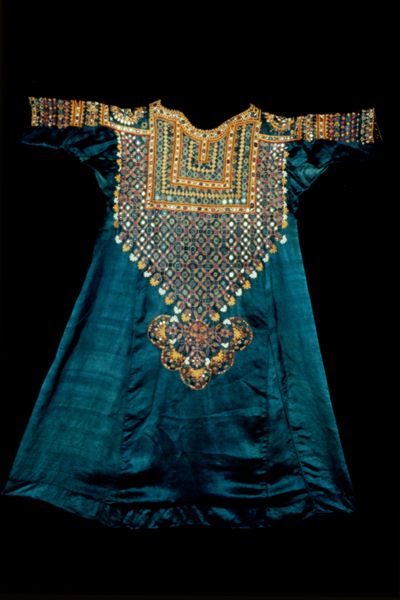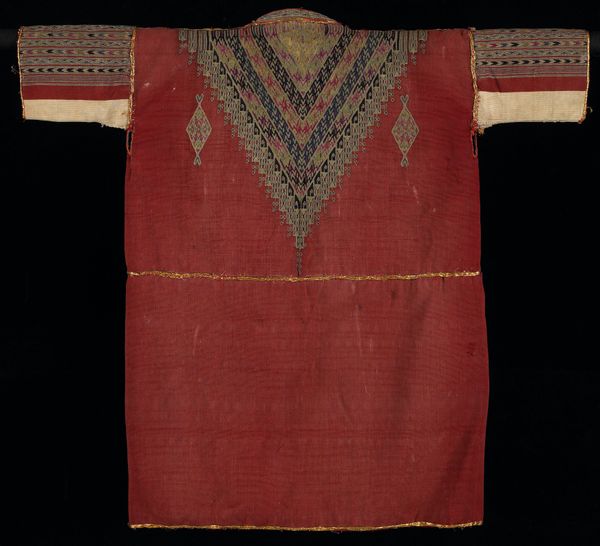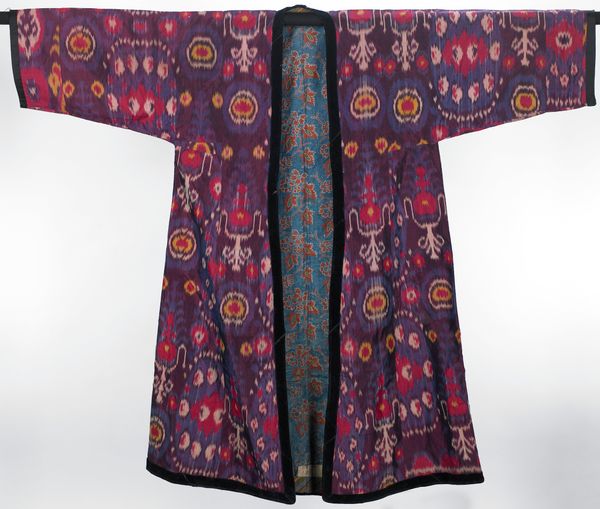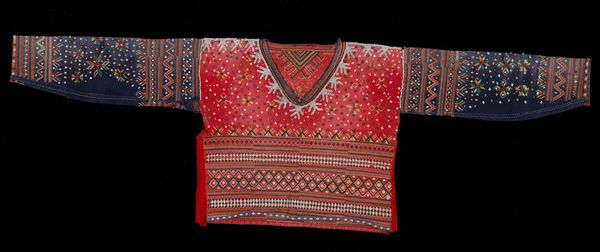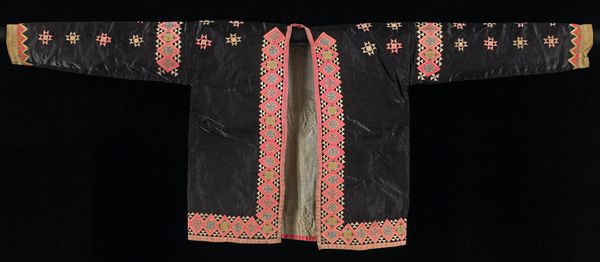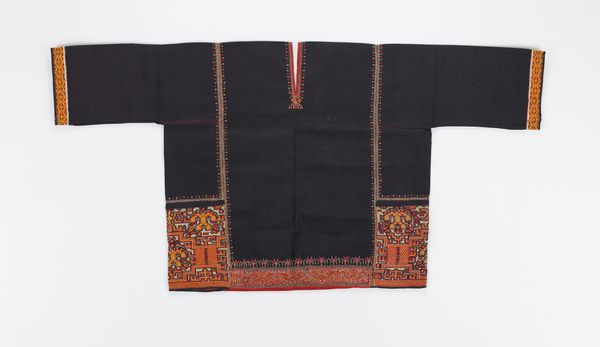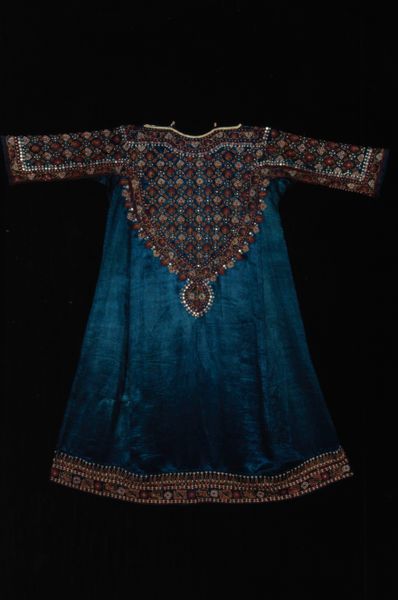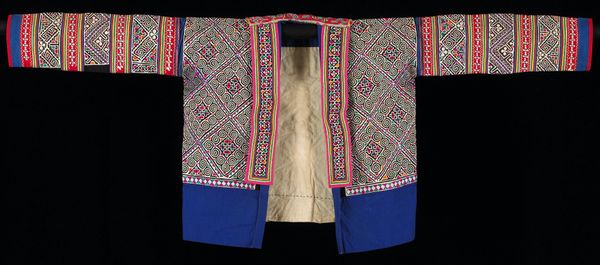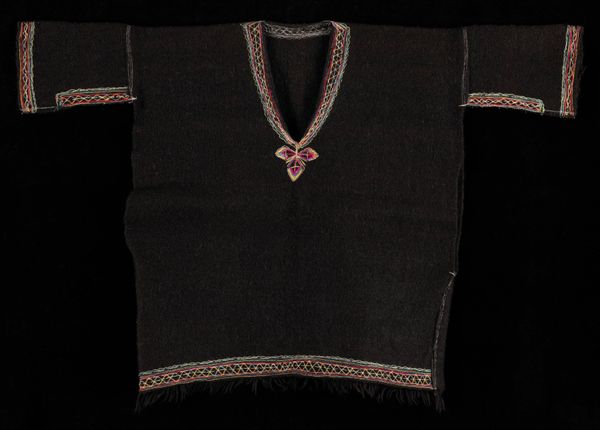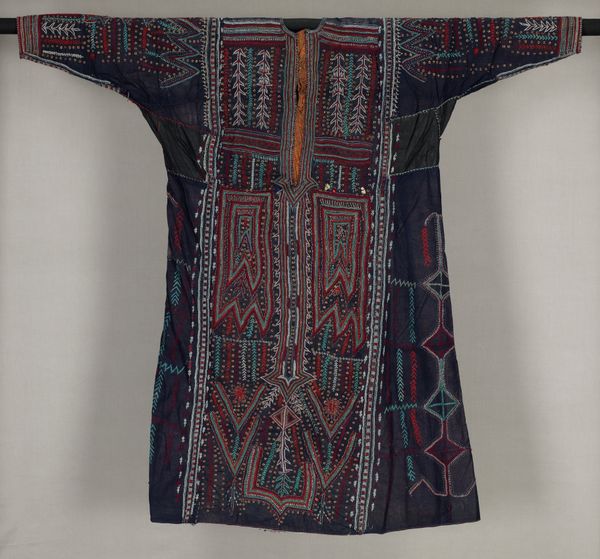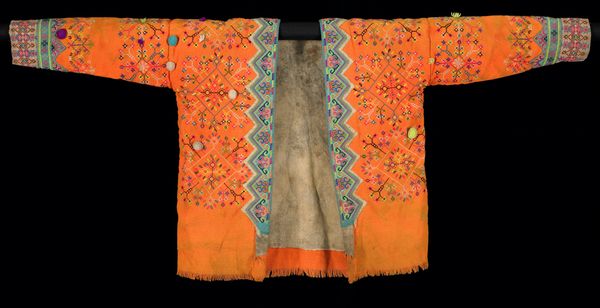
mixed-media, silk, weaving, textile, cotton
#
mixed-media
#
silk
#
weaving
#
textile
#
cotton
#
islamic-art
#
textile design
#
decorative-art
Dimensions: 47 1/2 x 43 5/16 in. (120.65 x 110.01 cm)
Copyright: Public Domain
This woman's tunic, or abho, was created by an anonymous maker using embroidery and silk. The abho's rich green silk provides a luxurious backdrop for the dense embroidery that adorns the yoke, sleeves, and chest. Notice how the texture of the embroidery contrasts with the smooth silk. Creating this level of detail by hand would have taken countless hours, reflecting the skill and patience of the maker. The embroidery isn't just decorative. It also signifies cultural identity and status. The motifs and patterns can indicate the wearer's region, social group, and even family history. Garments like this challenge our usual ideas about art versus craft. The artistry and labor involved in creating this abho are undeniable. By appreciating the skill and cultural context behind it, we can move beyond simple aesthetic appreciation and recognize the profound human effort embedded within.
Comments
minneapolisinstituteofart about 2 years ago
⋮
Probably the finest embroidery in all of India came from the Kutch region of Gujarat, where minute stitching and mirror work was a specialty of several Muslim groups. A wealthy Muslim woman would have worn this kind of tunic only on special occasions, completing the ensemble with a coordinating veil and a pair of loosely fitting silk trousers (ejar) with embroidered cuffs.
Join the conversation
Join millions of artists and users on Artera today and experience the ultimate creative platform.
